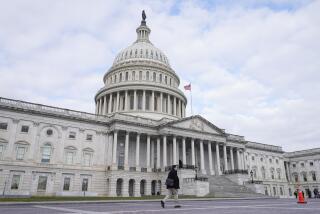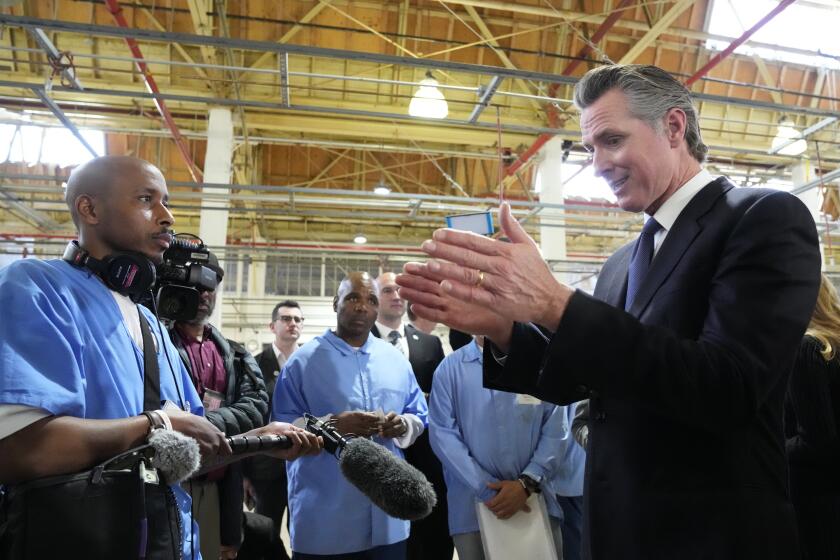Highlights of the bipartisan debt-ceiling deal
- Share via
Congressional leaders spent Monday trying to sell their respective caucuses in the House and the Senate on the benefits of the debt-ceiling and deficit-reduction agreement struck over the weekend at the White House. Here are some elements of the deal:
-- If Congress approves it, the compromise would raise the government’s borrowing limit in stages by at least $2.1 trillion and up to $2.4 trillion, while providing a dollar-for-dollar exchange in spending cuts. The package would resolve the issue until 2013, after the presidential election.
-- The framework of the deal cuts spending more than it increases borrowing authority and does not raise taxes. It also protects several programs from cuts, including Social Security, Medicaid, veterans benefits and pensions, civil and military pay, and programs for women, infants and children. Medicare would be cut no more than 2%, with the cuts falling on payments to doctors, hospitals and other providers of medical services.
-- Passage of the proposal would give President Obama authority to immediately increase the debt by $400 billion. It also establishes procedures to raise the debt ceiling by an additional $500 billion as soon as September for a total of $900 billion.
-- The initial increases are offset by $917 billion in spending cuts through caps on discretionary spending through 2021.
-- The subsequent increase would be $1.2 trillion to $1.5 trillion, depending on the success of a 12-member bipartisan congressional committee in identifying future deficit reductions that are approved by Congress and the president.
-- The joint committee, six Democrats and six Republicans, is charged with making a recommendation on further deficit reductions by Nov. 23 and can consider tax reform as well as cuts in spending. If the committee produces a proposal, it is guaranteed an up-or-down vote in both chambers of Congress, without amendments, by Dec. 23. But even if Congress approves it, the president retains veto power.
-- Several potential scenarios could come into play:
1. If the bipartisan committee agrees on at least $1.5 trillion in deficit reductions and the legislation is enacted by Congress, the debt ceiling will rise by $1.5 trillion.
2. If the total is between $1.2 trillion and $1.5 trillion, the debt limit increases dollar-for-dollar.
3. If the amount is less than $1.2 trillion, or the committee gridlocks and cannot agree on a proposal, it will trigger a debt ceiling increase of $1.2 trillion and across-the-board cuts totaling the same amount. Those cuts would be split 50-50 between defense and non-defense spending, with the exception of the programs listed above that would be shielded from cuts.
-- The deal also requires that the House of Representatives and the Senate vote before the end of 2011 on a joint resolution proposing a balanced budget amendment to the Constitution, though passage is not required. However, if such an amendment passed, the second $1.5 trillion debt ceiling would be authorized.
-- If the across-the-board cuts are triggered in December, they would not take effect until January 2013, giving Congress time to revisit the issue and agree on other budgetary or tax reforms. Given that neither party nor the White House supports $50 billion in annual cuts to defense spending, the framework is designed to give all sides motivation to negotiate.
SOURCES: Congressional Budget Office, White House, House Republican Conference
-- Compiled by David Meeks, Washington bureau
More to Read
Get the L.A. Times Politics newsletter
Deeply reported insights into legislation, politics and policy from Sacramento, Washington and beyond. In your inbox twice per week.
You may occasionally receive promotional content from the Los Angeles Times.










